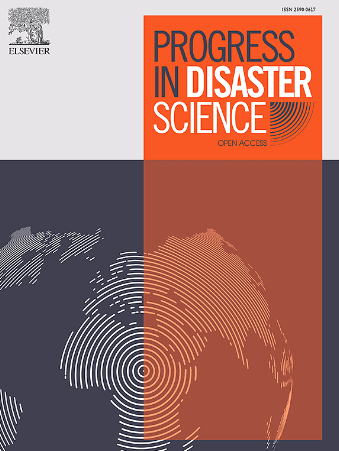孟加拉国极端河流水位预测的机器学习模型的比较评估:对洪水和干旱恢复能力的影响
IF 3.8
Q3 ENVIRONMENTAL SCIENCES
引用次数: 0
摘要
孟加拉国是一个极易受到气候变化影响的三角洲国家,对极端河流水位的可靠预测对于管理洪水和干旱风险至关重要。本研究比较了九种机器学习(ML)模型,使用34年数据集(1990-2024)预测老雅鲁藏布江沿岸三个关键站点的每月最高和最低水位。使用RMSE、R2和NSE等10个指标评估性能。随机森林回归(RFR)始终优于其他模型,在两个最大值(RMSE: 0.64-0.77 m;R2: 0.87-0.92)和最小水位(RMSE: 0.49-0.66 m;R2: 0.82-0.92),而线性模型在捕获非线性模式方面表现不佳。基于pca的框架进一步验证了RFR的稳健性,平均归一化综合得分为1.00(最大值)和0.99(最小值),显著超过Ensemble Regression(0.89/0.84)、Support Vector Regression(0.88/0.88)等模型。空间上,中游站精度较高(R2 >;0.90)由于稳定的流体力学,而下游性能则因潮汐效应而下降。关键创新包括自回归滞后特征、滑动窗口和多变量评估框架,显著提高了预测精度。这些发现表明,即使数据有限,ML模型也可以增强气候脆弱地区的水位预测和抗灾能力。本文章由计算机程序翻译,如有差异,请以英文原文为准。
Comparative evaluation of machine learning models for extreme river water level forecasting in Bangladesh: Implications for flood and drought resilience
Reliable forecasting of extreme river water levels is vital for managing flood and drought risks in Bangladesh, a deltaic nation highly vulnerable to climate change. This study compares nine machine learning (ML) models for predicting monthly maximum and minimum water levels at three key stations along the Old Brahmaputra River using a 34-year dataset (1990–2024). Performance was assessed using ten metrics including RMSE, R2, and NSE. Random Forest Regression (RFR) consistently outperformed other models, achieving the highest accuracy for both maximum (RMSE: 0.64–0.77 m; R2: 0.87–0.92) and minimum water levels (RMSE: 0.49–0.66 m; R2: 0.82–0.92), while linear models underperformed in capturing nonlinear patterns. A PCA-based framework further validated RFR's robustness, with average normalized composite scores of 1.00 (maximum) and 0.99 (minimum), significantly surpassing Ensemble Regression (0.89/0.84), Support Vector Regression (0.88/0.88), and other models. Spatially, midstream stations showed higher accuracy (R2 > 0.90) due to stable hydrodynamics, while downstream performance decreased from tidal effects. Key innovations including autoregressive lag features, sliding windows, and a multivariate evaluation framework significantly improved prediction accuracy. These findings demonstrate that ML models can enhance water level forecasting and disaster resilience in climate-vulnerable regions, even with limited data.
求助全文
通过发布文献求助,成功后即可免费获取论文全文。
去求助
来源期刊

Progress in Disaster Science
Social Sciences-Safety Research
CiteScore
14.60
自引率
3.20%
发文量
51
审稿时长
12 weeks
期刊介绍:
Progress in Disaster Science is a Gold Open Access journal focusing on integrating research and policy in disaster research, and publishes original research papers and invited viewpoint articles on disaster risk reduction; response; emergency management and recovery.
A key part of the Journal's Publication output will see key experts invited to assess and comment on the current trends in disaster research, as well as highlight key papers.
 求助内容:
求助内容: 应助结果提醒方式:
应助结果提醒方式:


